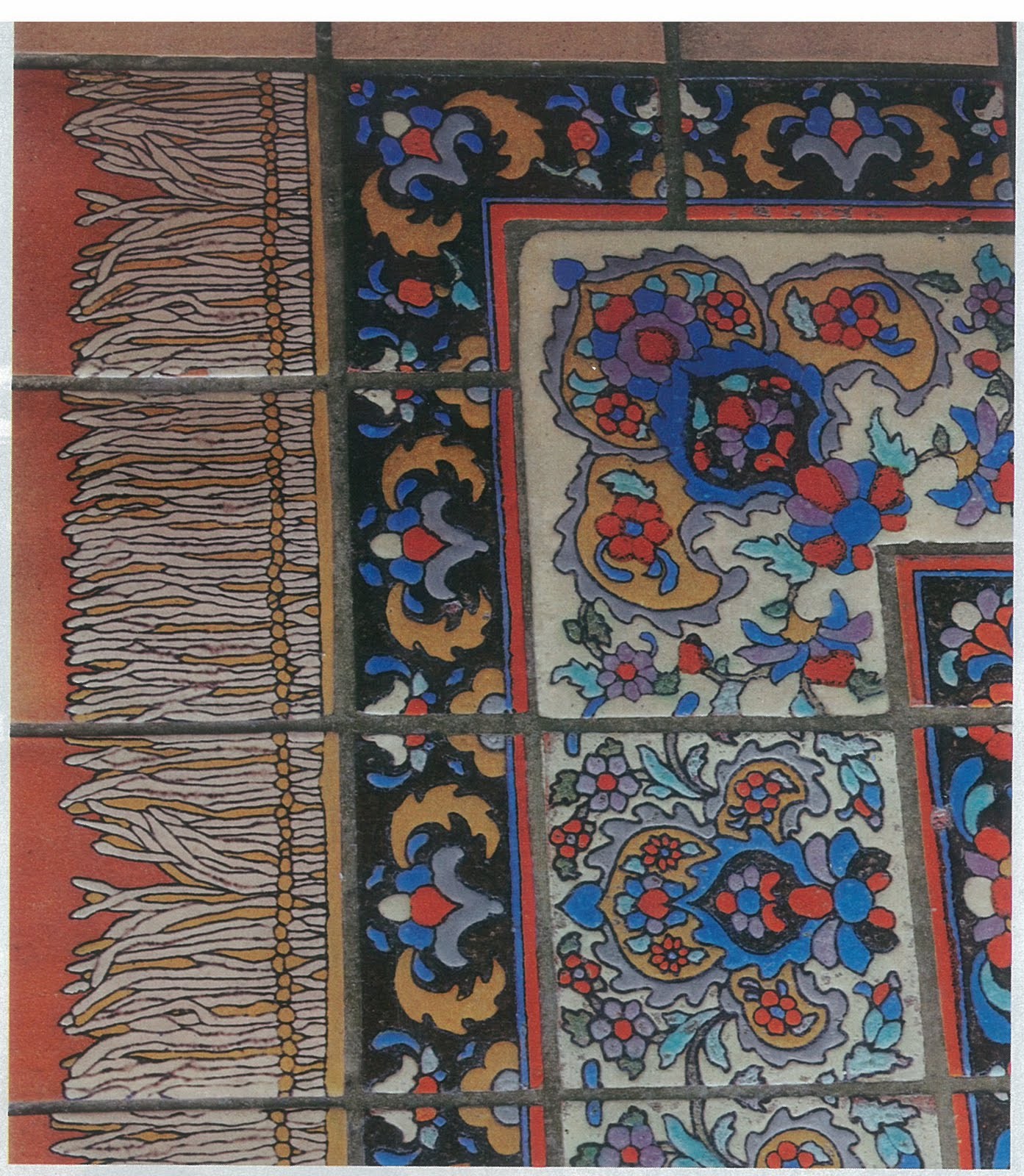Malibu Tiles
Malibu Tile’s origin comes from Malibu Potteries, which, though only in existence for six years, distributed tile world-wide. Founded by a mother of the owners of the famous Adamson House on Malibu beach in California, it created the tiles for the house which Wikipedia calls a “museum of tile” and the “Taj Mahal of Tile”. Malibu Pottery used the same cuerda seca techniques and glaze colors as in Catalina Tiles from that same time period and are also found throughout Southern California.
 One of the home’s most popular examples of tile work is a 60-foot (18 m) imitation Persian carpet made of tile, including small pieces designed to look like rug fringes. In the exterior of the house, the colorfully tiled Neptune Fountain, Peacock Fountain and Star Fountain are among the home’s most photographed examples of tilework. Nearby, there is also an elaborately tiled outdoor tub used by the Adamsons to bathe their dogs. The bathhouse and swimming pool are also covered with Malibu tile, and the dressing rooms have tiled showers with decorative motifs. The Adamson House has many of the potteries’ most significant remaining works.
One of the home’s most popular examples of tile work is a 60-foot (18 m) imitation Persian carpet made of tile, including small pieces designed to look like rug fringes. In the exterior of the house, the colorfully tiled Neptune Fountain, Peacock Fountain and Star Fountain are among the home’s most photographed examples of tilework. Nearby, there is also an elaborately tiled outdoor tub used by the Adamsons to bathe their dogs. The bathhouse and swimming pool are also covered with Malibu tile, and the dressing rooms have tiled showers with decorative motifs. The Adamson House has many of the potteries’ most significant remaining works.
Among the most impressive and best-preserved tile work is in the interior of the house in the kitchen and the 5 bathrooms. Many of the richly patterned tiles are inspired by traditional Spanish and Moorish designs or by Arts and Crafts flower motifs.
Other manufacturers of the Malibu and Catalina tile tradition from the 1920s are, Batcheldor, CALCO in South Gate, Catalina Clay Products in Avalon, Taylor Tilery in Santa Monica, Gladding McBean & Co. in Hermosa Beach and Brayton Laguna Pottery in Laguna.
